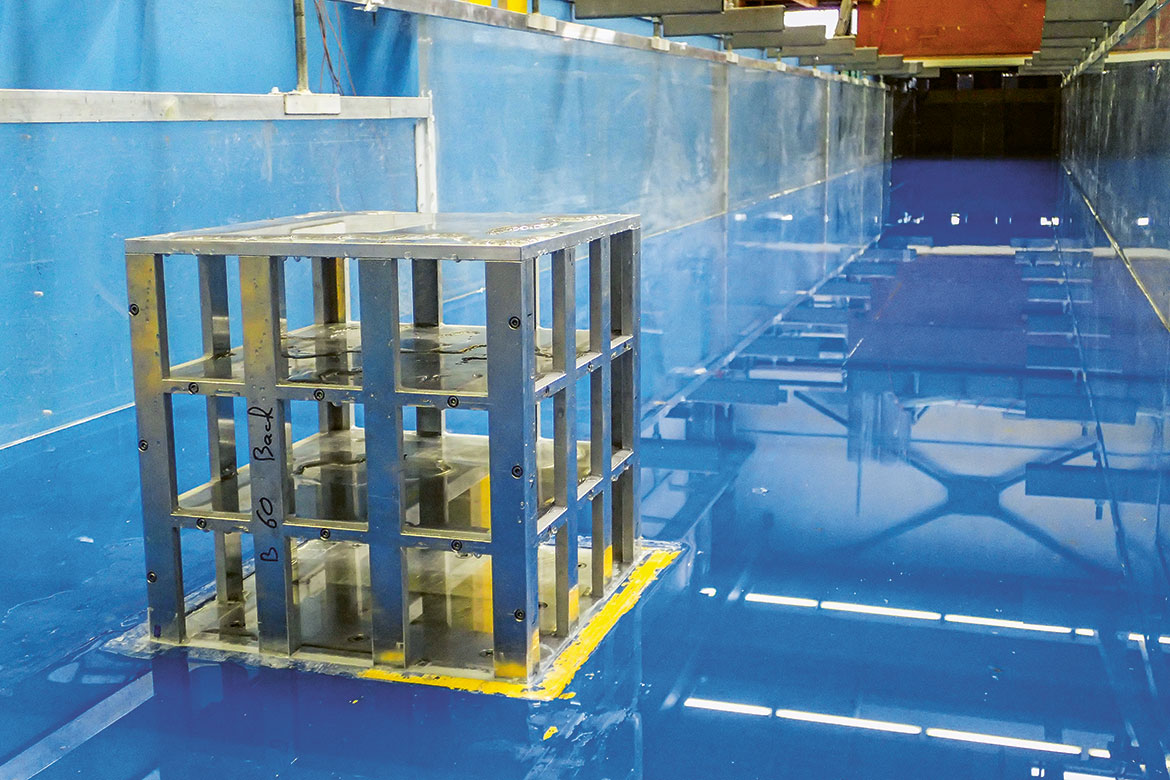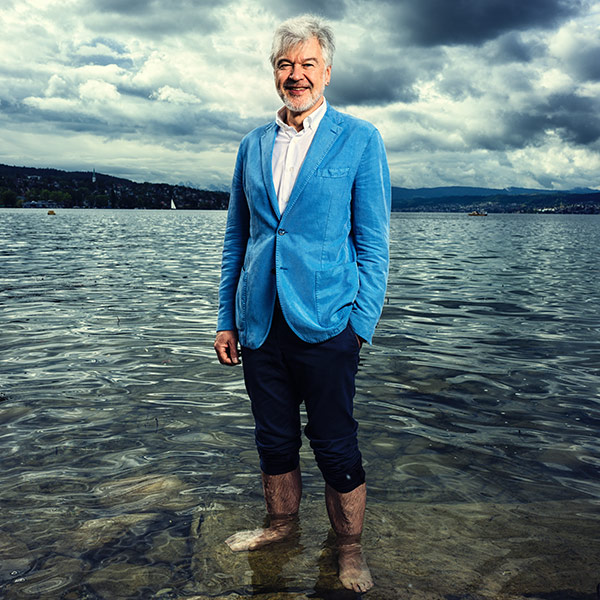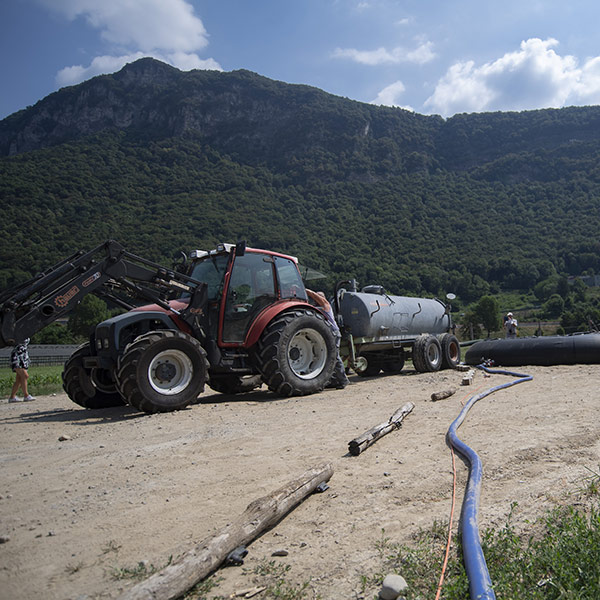A reservoir of difficulties for hydropower
Hydropower will have to undergo big changes if it’s to meet the demands of the Energy Strategy 2050. But this old source of renewable energy is faced with problems today. We look at the recommendations made by the National Research Programme.

The biggest dam in Europe: Grande Dixence in the Valais Alps. It feeds the three storage power plants of Fionnay, Nendaz and Bieudron, which together form the biggest hydropower plant in Switzerland. | Image: Jérémy Toma/Wikimedia Commons
Without hydropower, nothing much would work in Switzerland. Some 57 percent of all the electricity produced in the country comes from hydroelectric power stations. This energy source will also play a decisive role in the future – not least on grounds of climate protection. After all, Switzerland wants to be climate neutral by the year 2050, and hydropower is meant to play a big part in that.
But in recent years, the prospects for hydropower have darkened. In its second monitoring report on the implementation of the Energy Strategy 2050, the Swiss Federal Office of Energy (SFOE) was cautious in its optimism. Many hydroelectric power stations are floundering in economic terms because the market prices for electricity were very low from 2009 to 2016. What’s more, there are fewer funding opportunities today for small-scale plants.
Efficient storage power plants
And yet the technology of hydropower is the least of its problems. It’s regarded as being overall well developed and highly efficient. The big storage power plants in Switzerland work at an efficiency rate of 90 to 95 percent. However, there are economic and political challenges that have to be met. According to the environmental economist Ludovic Gaudard at the University of Geneva, one of today’s problems lies in the history of Swiss hydropower. Many large-scale plants were built by state monopolies in the 1950s. But today, the system is very different. The market has already been liberalised for major customers, and decentralised wind turbines and solar plants are providing competition to hydropower. How is one supposed to invest in the cumbersome hydropower industry in a way that will be worthwhile over a period of many decades? This question isn’t easy to answer.
Together with several colleagues, Gaudard has been working on the National Research Programme (NRP) ‘Energy’ for the past four years in order to try and find solutions. In 2019, they submitted their closing report. The hydropower sector will have to become more flexible in future, they say.
Last year, the Swiss hydroelectric power plants produced more than 36,000 gigawatt hours of electricity. Two thirds of this were produced by four cantons: Valais, Graubünden, Ticino and Bern. A distinction is made between a run-of-river power plant, which uses a flowing body of water, and storage and pumped-storage power plants, in which water is stored in a dam. The newest plant is the pumped storage plant Liern in the Glarus Alps, which is the biggest of its kind in Switzerland. It has a storage volume of 23 million cubic metres and has been able to produce 1,000 megawatts of electricity since 2017.
In fact, hydropower already has a reputation for being flexible. This is especially the case with storage and pumped-storage power plants. If electricity prices are high, water can be channelled through the turbines to make electricity. But there is room for improvement, says the energy economist Hannes Weigt from the University of Basel, who has been looking at operational issues in the NRP. For example, it would be possible to adapt the operating mode so that a plant can react within just a few minutes to short-term fluctuations in the market price. Up to now, it has been rare for reaction times to be so swift. All the same, says Weigt, “optimisation isn’t going to make a big difference”.
Planning for the long-term – but staying flexible
Much could be achieved by practising more flexible long-term planning, says Gaudard. In earlier times, a hydropower plant would be built and then run unchanged for decades. However, it could make more sense in future to start new projects with smaller plants that might later be expanded.
More recently, there has been much debate about a specific political constraint that exists for hydropower. The plant operators have to pay a usage fee to the cantons – the so-called water tax, which has been in existence for over 100 years. But now there are calls for this to be reformed. The water tax could be adjusted constantly, according to the amount of income generated. The SFOE is engaged in similar discussions to this end. In NRP Energy, experts have been running through several models for a variable water rate, and they recommend seeking a compromise solution that will take economic and socio-political aspects into account, and will also draw all the stakeholders into the conversation – including the energy companies and the local authorities. The reports submitted by the NRP, however, also emphasise that we should not overestimate the impact of a reform of the water tax, because it alone will be unable to solve all the profitability problems that the electricity market creates.
The future of Swiss hydropower will also be decided by environmental laws. According to the Regulation on Water Protection, storage power plants will in future have to let more water pass through them unused than has been the case. This is in order to conserve the biotope along the waterways. But this will then reduce the amount of electricity generated.
Glacial lakes as a new source of energy
Either way, the prospects for expanding hydropower are far less promising than they were even back in 2012, when the SFOE published its first potential study. According to up-to-date estimates, meeting the requirements of the Energy Strategy will mean achieving an average annual increase in production of 83 gigawatt hours until the year 2035 – which is roughly 0.2 percent each year. The SFOE regards this as achievable, but with one important caveat: the potential that had been identified for the whole period up to 2050 will have to be exploited in full by 2035 instead. “The question then remains what on earth we would still be able to build between 2035 and 2050”, says Christian Dupraz, the head of Hydropower at the SFOE.
This assessment seems pessimistic, as it assumes that all potential for expansion would be exhausted by 2035. But the SFOE relativises this statement in its monitoring report. First, the operators submitted less comprehensive data for this second report than they had done for the first in 2012. It is possible that they are still keeping some projects secret. Secondly, the new estimate of potential did not take account of the glacial lakes that the receding glaciers might create, and that could serve as reservoirs. The potential for expansion could in fact be several gigawatt hours per year greater than suggested, says the latest report.
One glacial lake that is destined to be used soon is situated under the Trift Glacier in the canton of Bern. Switzerland’s biggest current hydropower project is planned to be built there. In future, this reservoir should store 85 million cubic metres of water, and the hydropower plant attached to it would produce 145 gigawatt hours of electricity each year. But if Swiss hydropower is to be expanded in line with the goals that have been set, much more still is needed.




